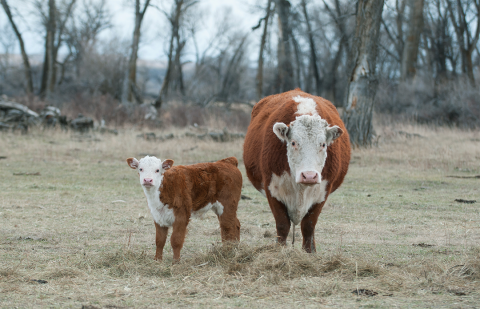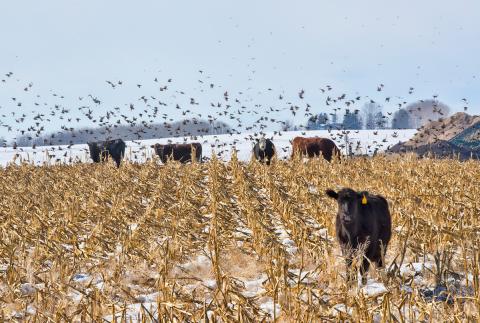Pasture and Forage Minute: Considerations for Feed After Calving, Adding Legumes to Pastures
February 12, 2024
Tips on meeting nutrient requirements of cows after calving season and improving pasture production by frost seeding or interseeding legumes.

Pasture and Forage Minute: A Closer Look at Section 180, Forage Inventory Season
February 6, 2024
With recent land purchases, many Nebraska producers are seeking to better understand IRS Section 180 tax deductions. This article provides a review of the tax code and its potential financial implications for landowners of newly acquired land.
Pasture and Forage Minute: Considerations for Pasture Leases and Winter Hay Nutrition
January 30, 2024
Extension educators review factors that affect the success of pasture grazing leases, and how to avoid toxicity and malnutrition through livestock feed during the winter.

Pasture and Forage Minute: Preparing Your Operation for 2024, Planning Spring Annual Forages
January 23, 2024
Winter brings time to take stock of our current operations and plan for the future, which can make a significant impact on success in the upcoming year.
Pasture and Forage Minute: Winter Insect Mortality and Livestock Water Needs
January 16, 2024
Extension educators review the effects of subzero temperatures on overwintering insects and whether snow can adequately be used as a water source for cattle.
Pasture and Forage Minute: Record-keeping for Taxes, Selecting Alfalfa Varieties
January 9, 2024
It's time for another tax season. Agricultural Economics Extension Educator Shannon Sand shares tips on getting prepared for the March 1 deadline. Plus, considerations for selecting alfalfa varieties.
Pasture and Forage Minute: Reflecting on 2023, Improving Pastures in 2024
January 2, 2024
Extension Forage Crop Residue Specialist Daren Redfearn shares his observations on pasture and forage production throughout 2023, and what producers can do to enhance plant growth in 2024.
Pasture and Forage Minute: Tips for Cornstalk Grazing, Using Bad Hay and Silage
December 26, 2023
Considerations for grazing cornstalks with snow cover and utilizing low-quality hay and silage during periods of low supply and high feed costs.





